If you’ve ever driven from Paleochora over to Sougia, maybe stopping en route to explore Ancient Elyros (see Explore ! March 2020) you’ll probably have passed through tiny Moni village almost without realising it. But there are three very good reasons to stop in Moni, the third being to call at the taverna, after visiting the first two.
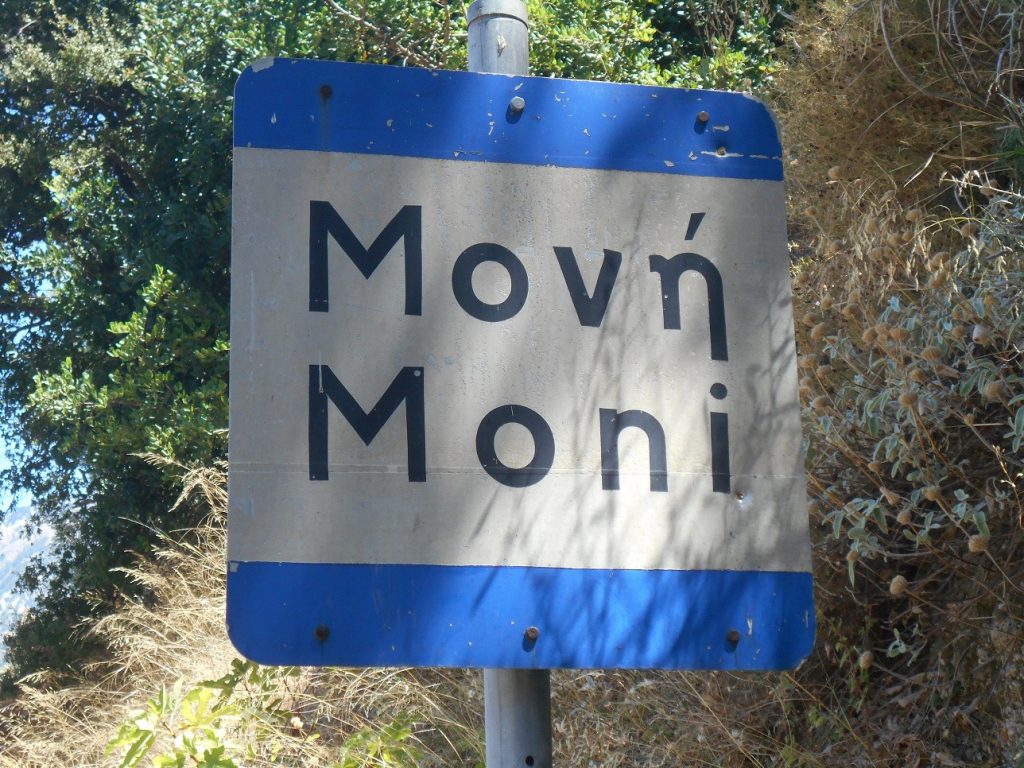
Allow 40 minutes to drive from Paleochora to Moni, easier through Azogirez and Strati, more dramatic and certainly more nerve-wracking through Anidri and Prodromi, either way then through Maza and south towards the coast. If you’ve not stopped off in Sofia’s wonderful shop in Rodovani, or called in at ‘The Old Petrol Station’ cafe/taverna in nearby Agriles, with its panoramic terrace view ….. then why not ?
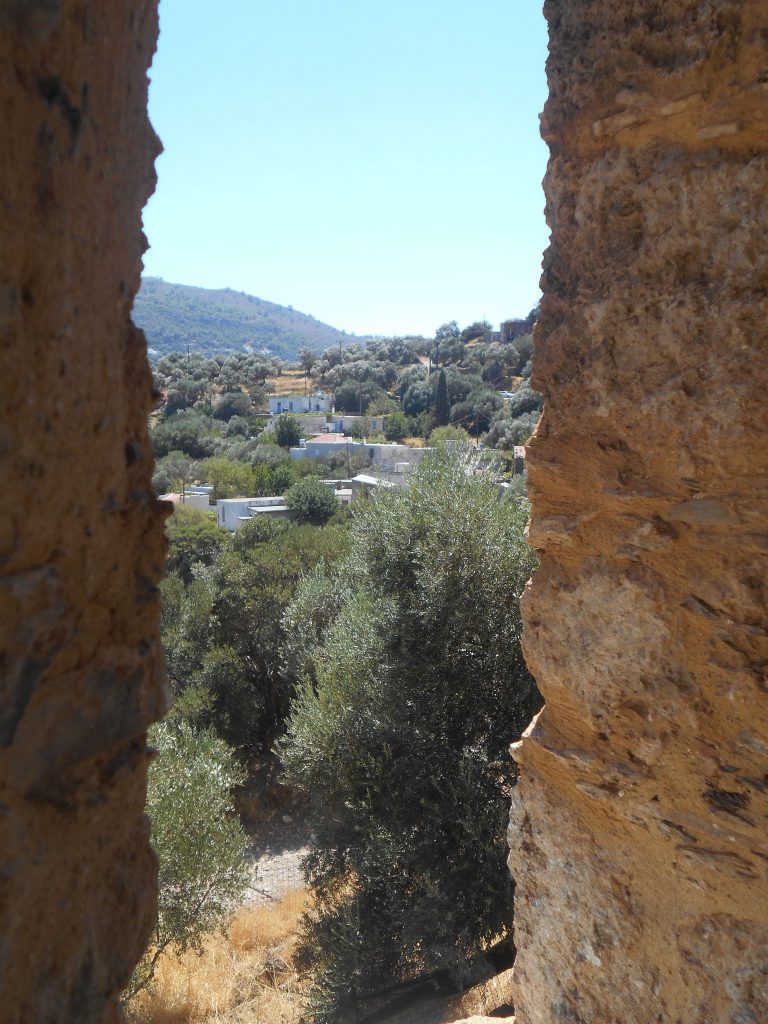
Approaching Moni, and 600m before the village, is a sign left to the church of Agios Nikolaus ; the track is driveable with care, but it’s only a ten minute, half-kilometre walk down to this delightfully situated 13th century Byzantine church. The original eastern section was extended, and frescoes painted in 1315 by the famous hagiographer Ioannis Pagomenos. Suffering badly from smoke damage and centuries of deterioration, these were renovated in 2006-07, and depict the life of Agios Nikolaus, with scenes of the Last Judgement. An Information Board tells you more. The adjacent attractive campanile was added in the 19th century ; climb (with care) the inside steps for an unorthodox view towards Moni. Sadly, and increasingly so in Crete, the church is usually locked, but photos show the frescoes before and after restoration.
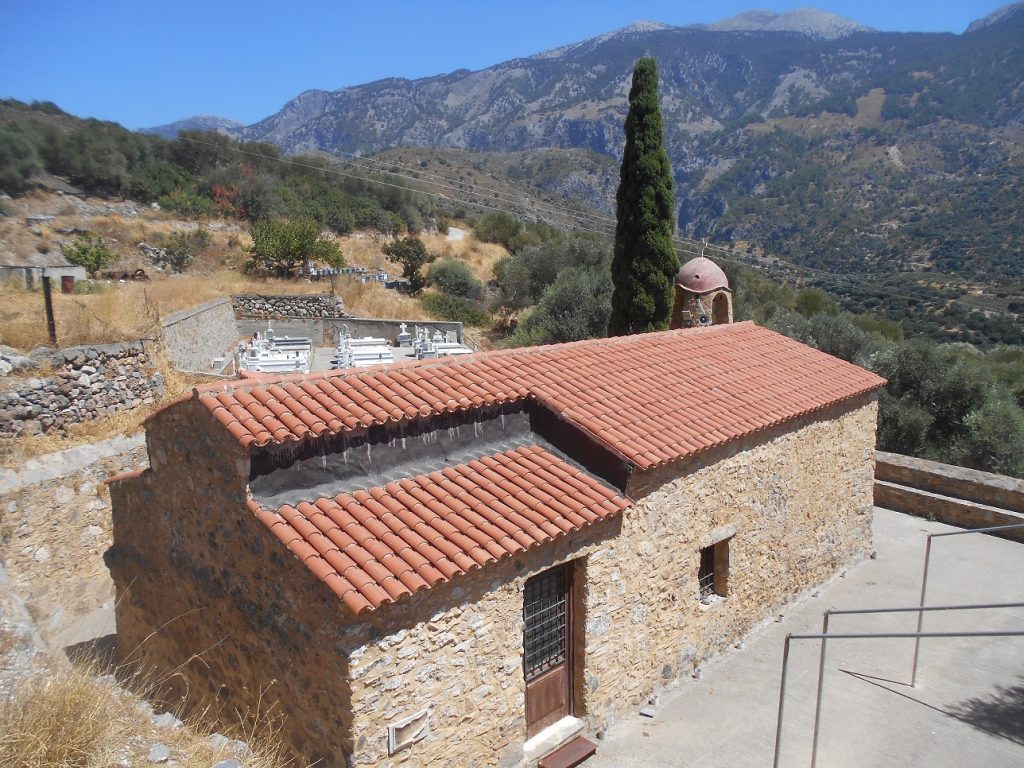
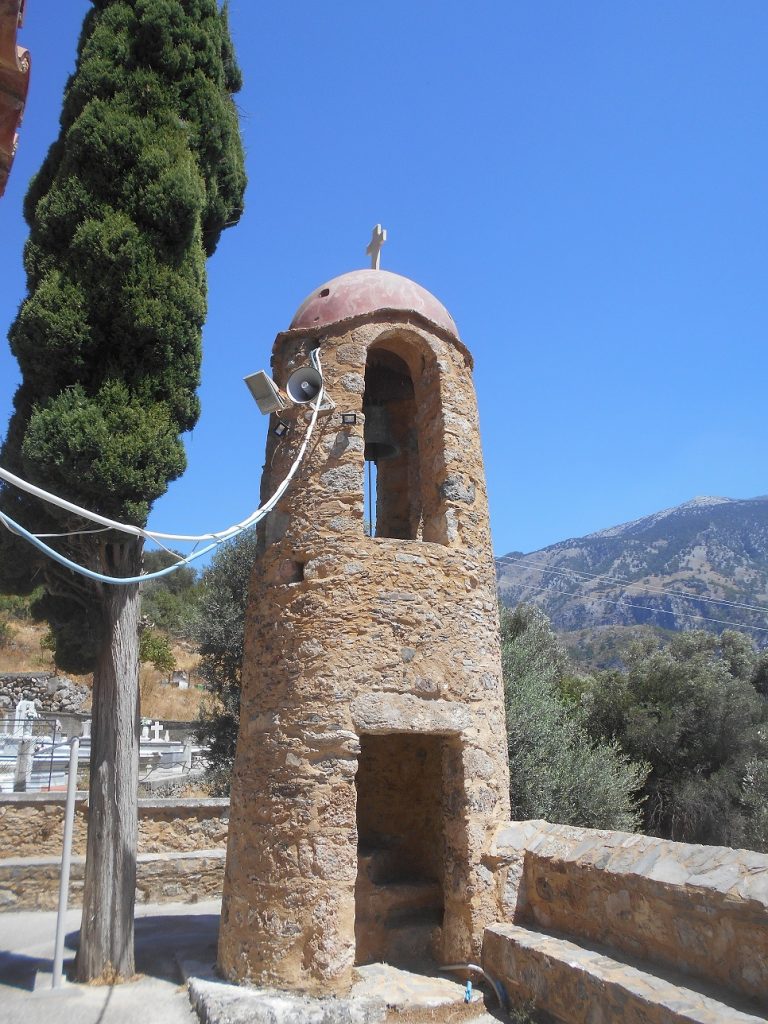
Our next location pre-dates Agios Nikolaus by maybe as many as two thousand years. Drive into Moni, and almost opposite the taverna, take the surfaced road climbing initially SW. This twists and turns in all directions before, after 2 km and on a bend, reaching a sign – “Conical Burial Monument ”, where there is a parking space.
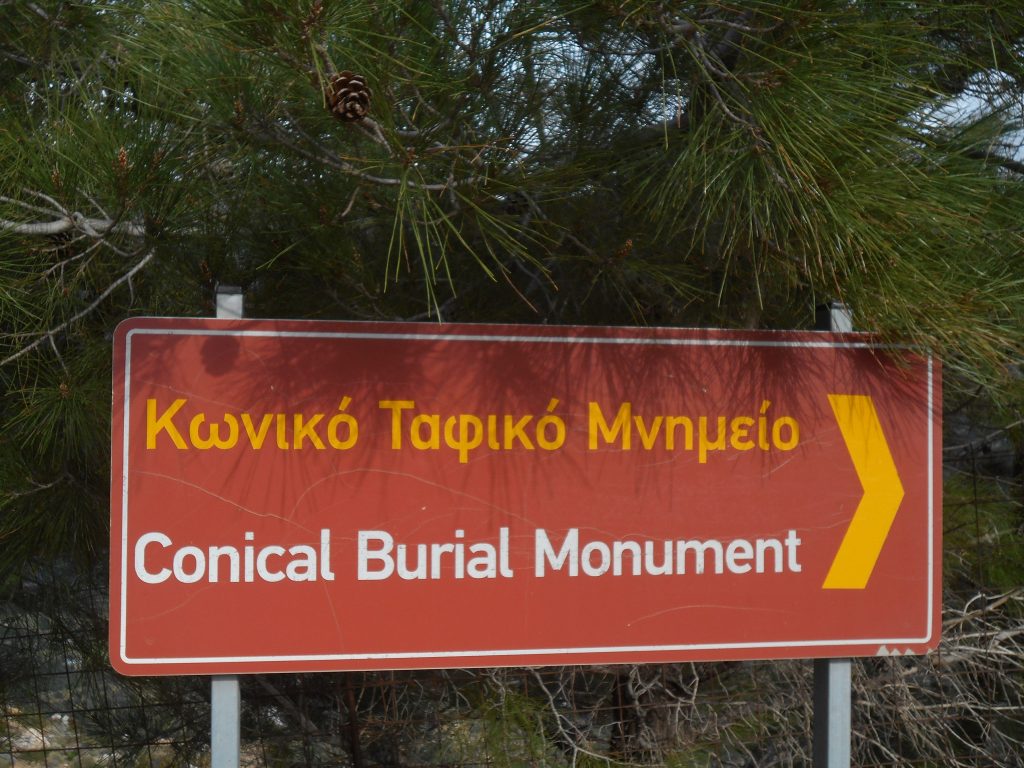
On the ridge below, and not easily attained, is a rock-cut tomb, almost certainly from the Dorian period (1100 – c.500 BC) carved into a sizable pyramid shaped boulder.
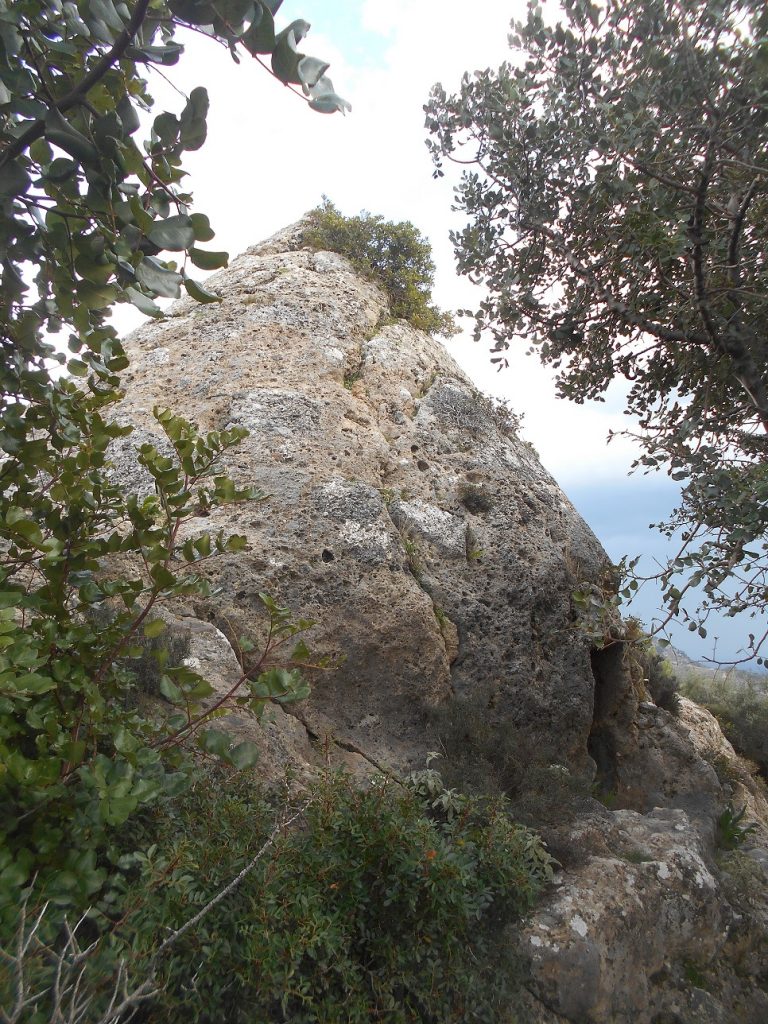
It’s a steep scramble down on a path of sorts, right of a fence and left of a rock outcrop (but easier coming back …) then along to this unique burial chamber.
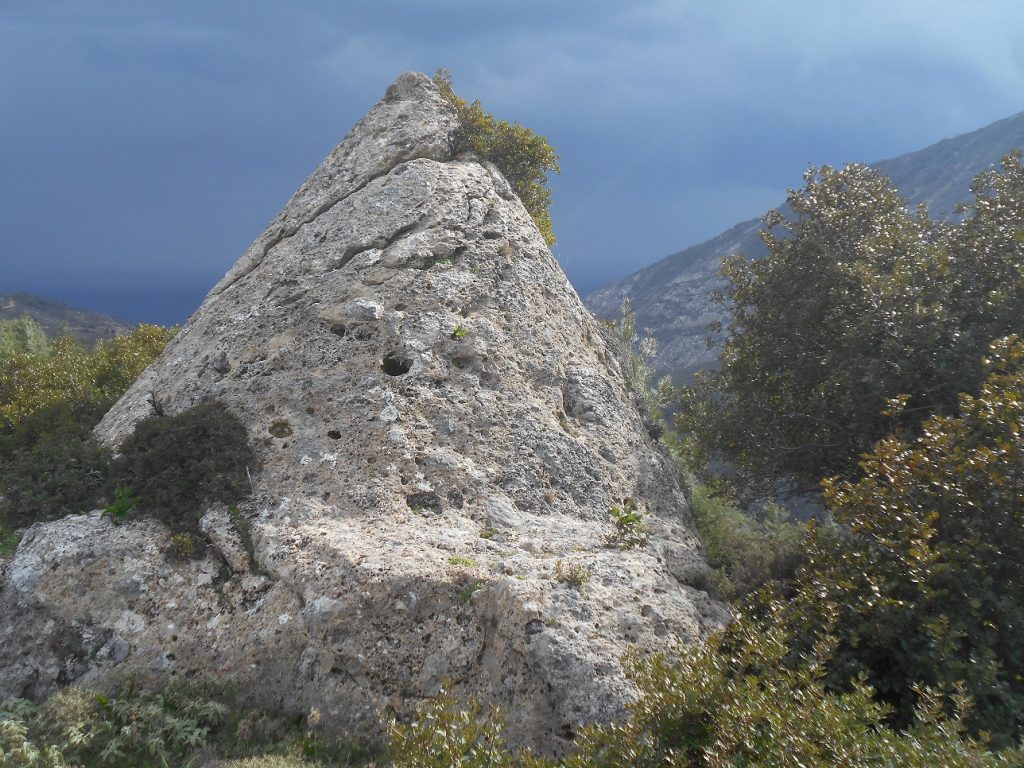
The boulder is 4.6m high with a circumference of 16m : the carved room measures 2.20m x 2.10m with a height of 1.40m. Simply stunning. It’s possibly connected to Elyros, the largest and most important Dorian city in SW Crete, less than 2 km away. And similar in structure to rock-cut tombs at Yrtakina, Kadros and especially Kalamyde (see Explore ! – Sept 2018). Open to conjecture, intrigue, admiration, and photographs.
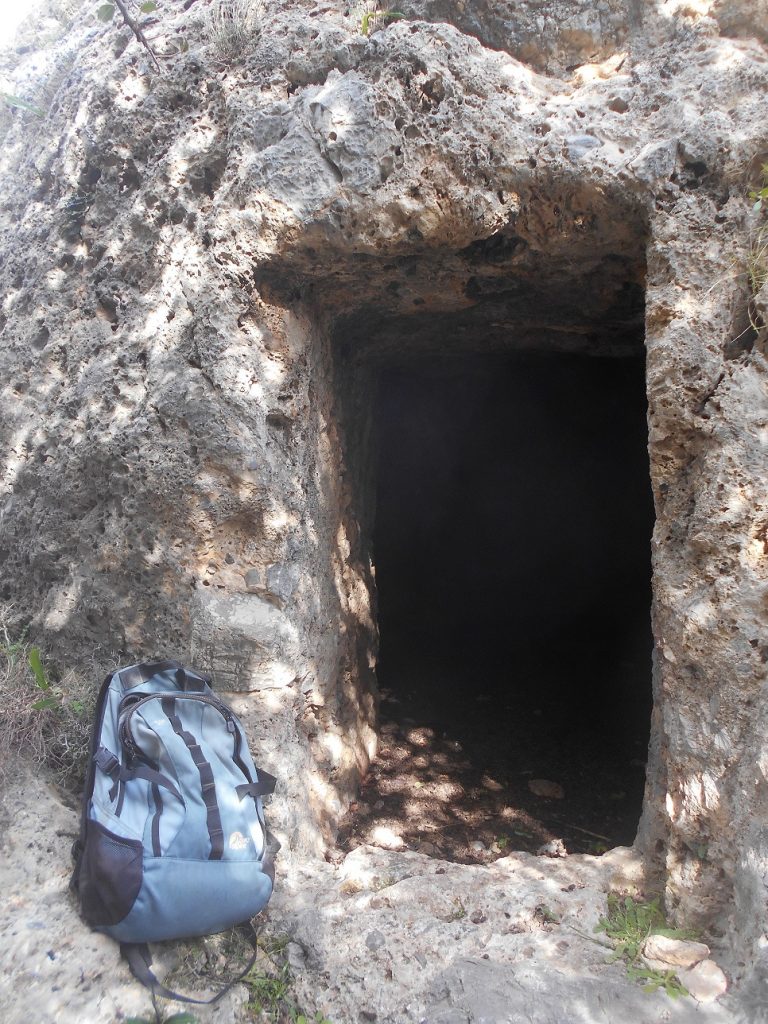
When we returned to the road on our first visit, an elderly man was standing by his truck, viewing his goats through powerful binoculars. “ You’ve been to the grave, it’s difficult,” he said. “ No problem, we’re mountaineers,” we assured him, “do you know how old it is ?” “ Polla chronia,” he told us, “ many years, before my grandfather’s grandfather’s grandfather’s time.” How eloquent and articulate, and how typically Cretan.
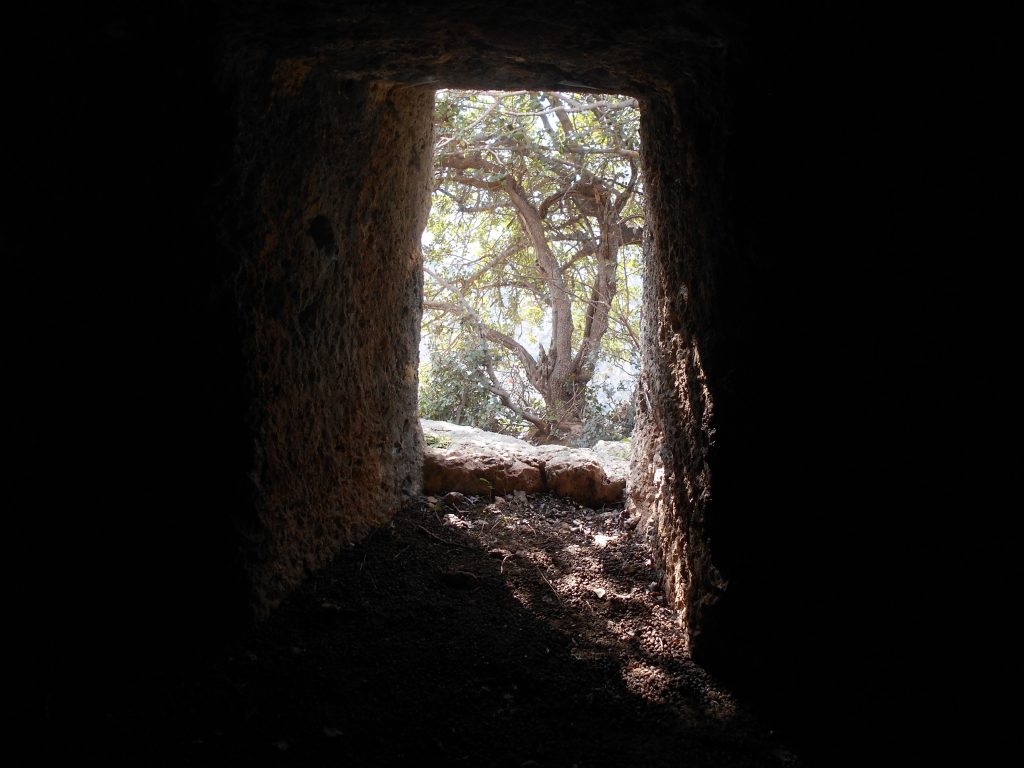
Now we can go to the taverna in Moni, with its “traditional kitchen” of Cretan dishes; in autumn there’s nothing tastier than “chestnut stifado” with potatoes and onions, straight from the oven. Michaelis and his Romanian wife Monica have been here several years now, and as well as drinks, snacks and meals, can offer simple accommodation.
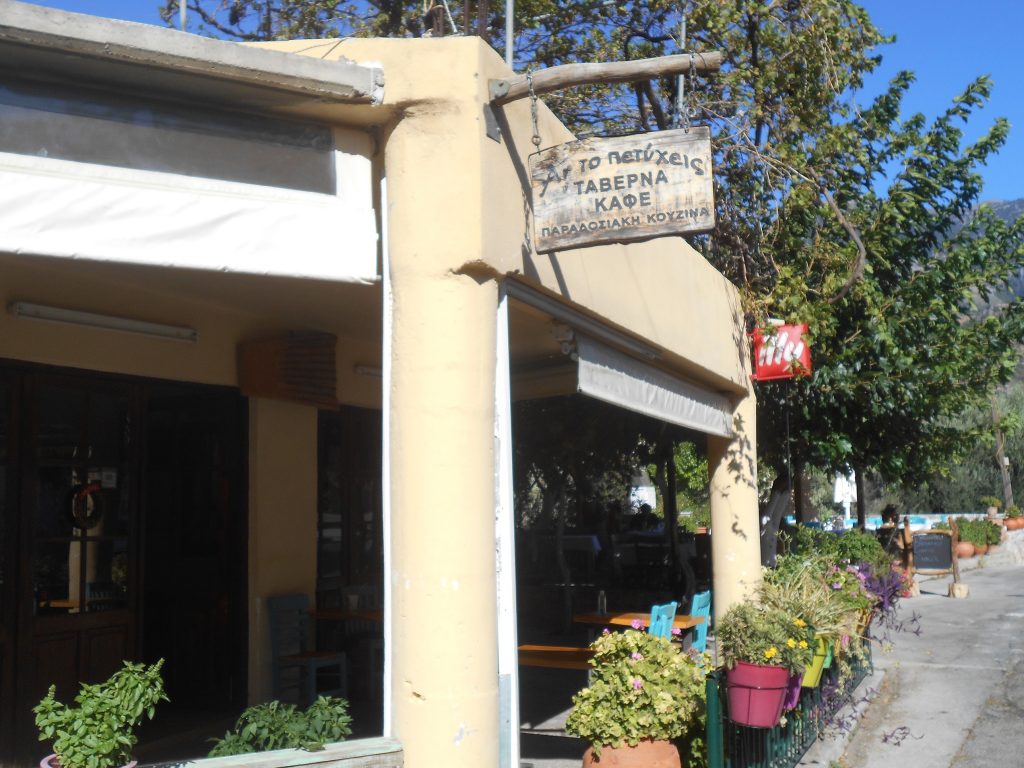
Moni, together with the two higher villages of Livadas and Koustoyerako, was destroyed by the Germans in September 1943, an atrocity well documented (ref. Explore ! February 2017.)
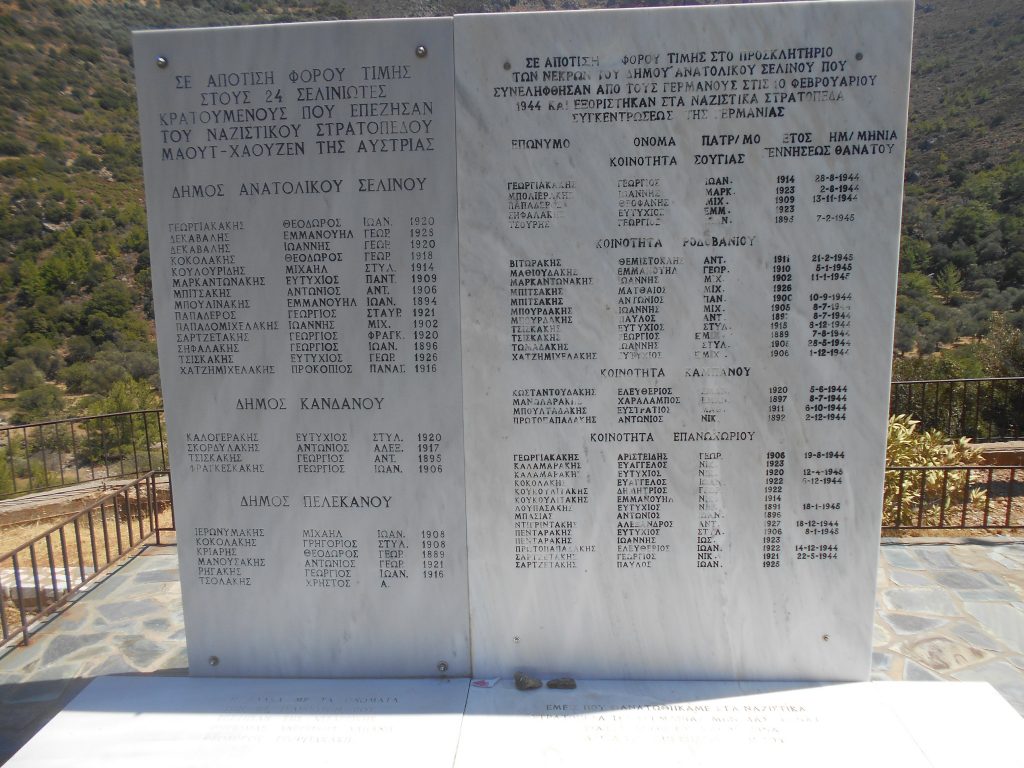
Further down the valley, at the road junction to Livadas, is a memorial listing the names of 34 local men murdered, and of a further 24 transported to the concentration camp in Maut-Hausen, Austria, from where they never returned to their island home. Inhumanity and barbarity far beyond words.
Moni : three thousand years of history in less than 700 words, a few photographs, and a short afternoon visit. Go and explore, discover, and enjoy the village.


5 comments
Skip to comment form
Thank you Bob for another informative article about the wonderful are.
Thanks for sharing the story 🙂 Wonderful to read in these days when I cannot travel to Crete.
Can you provide a reference regarding your above statement ” almost certainly from the Dorian period (1100 – c.500 BC) carved into a sizable pyramid shaped boulder”? Can you substantiate the monument’s creation within the so called Dorian period?
Author
I always took the Dorians as an historical construct to link the two ends of the “Greek Dark Ages”. The transition from Linear B script to illiteracy and then to writing in the phonetic pre-cursor of the Greek alphabet. So if a structure was from this time, I think calling it “Dorian” is as good a description as any.
Yassas, the pyramid of Sougia, near the settlement of Moni in the province of Selinos, is one of those ancient monuments for which there is still no clear explanation of its meaning and use.
Some locals know it as a “kiln”, as the burnt interior suggests that it was used as a ceramic kiln in the past.
Archaeologists suspect that the small conical pyramid with a circumference of 16 metres and a height of 4.60 metres served as a tomb in the Greco-Roman period, although no objects of research significance have been found.
Kaló Chimóna (???? ???????) – have a good winter, kv